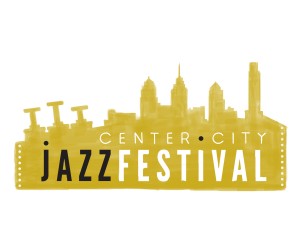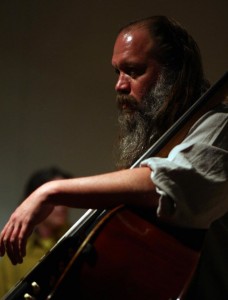GigSalad a good business model for gigging musicians
Review by Dawoud Kringle
Date: April 11, 2016
Venue: WeWork Wall Street

Review by Dawoud Kringle
Date: April 11, 2016
Venue: WeWork Wall Street
 Who: Black Thought
Who: Black Thought
What: Black Ink Presents: The Last Dragon
When: Tuesday, April 26, 2016 from 7:00 PM to 10:00 PM (EDT)
Where: Nitehawk Cinema, 136 Metropolitan Avenue, Brooklyn, NY 11249
Black Thought, lead singer and emcee of the iconic hip-hop band The Roots, will host a special film screening of The Last Dragon. The screening is the first in an expected series of events highlighting classic “throwback” movies with memorable soundtracks.Tuesday’s screening will be followed by Black Thought leading a first-time-ever conversation with the film’s star, Taimak and with El DeBarge, singer of the soundtrack’s biggest hit, “Rhythm of the Night.”
 Returns for Jazz Appreciation Month on April 30, 2016
Returns for Jazz Appreciation Month on April 30, 2016Fifth Annual Center City Jazz Festival in Philadelphia coincides with Jazz Appreciation Month. The festival has announced a jam-packed schedule of 20 bands performing at five venues over six hours, all within walking distance of each other in the heart of Center City.
The CCJF is sponsored by Fifth City Productions, Wyncote Foundation, and Arts, Culture and the Creative Economy.
Text by Dawoud Kringle
There was almost nothing that could have prepared us for the news, when, on Thursday, April 21st, 2016, the news of the death of Prince was announced. At a time when he was riding the wave of yet another rise of success, suddenly it all ended.
Text by Dawoud Kringle
 Once in a while, a true musical visionary emerges whose work redefines our perception of music, and how and why we make it. As a writer I am challenged to dig deep into my thesaurus to find adjectives adequate to the task of qualifying the work of a unique artist like Mark Deutsch. It is quite difficult to describe with words the astonishing psychic energy and breathtaking beauty of this music. One must experience it for oneself.
Once in a while, a true musical visionary emerges whose work redefines our perception of music, and how and why we make it. As a writer I am challenged to dig deep into my thesaurus to find adjectives adequate to the task of qualifying the work of a unique artist like Mark Deutsch. It is quite difficult to describe with words the astonishing psychic energy and breathtaking beauty of this music. One must experience it for oneself.
Mark Deutsch is a classically trained contrabassist and sitarist. In the late 1980s, Deutsch began exploring North Indian Hindustani classical music. His pursuits of this music, and work on sitar, inspired him to explore the mathematics of sound, particularly music’s underlying frequency structure. His sitar teacher, Ustad Imrat Khan, had told him that a westerner needed 20 years of study to properly hear the subtlety of intonation within Indian raga. He refused to accept this. So, he began to work out the mathematics of the musical intonation. He augmented this by playing recordings of Indian music in his sleep; especially recordings of the sarangi. His work revealed nonlinear mathematical patterns that exist in natural sound, the overtone series, fractals, the golden mean, and the Fibonacci series.
One night, he had a dream that he was playing sarangi on the contrabass. This was the initial inspiration that led to the design and construction of the Bazantar; an acoustic bass with additional sympathetic and drone strings. The instrument would take advantage of the nonlinear mathematical patterns found in sound. He began work on the first prototype of the Bazantar in 1993, and a finalized version was completed in October of 1997.